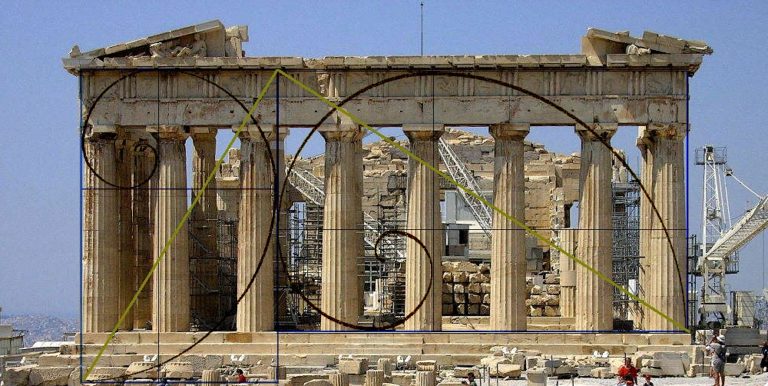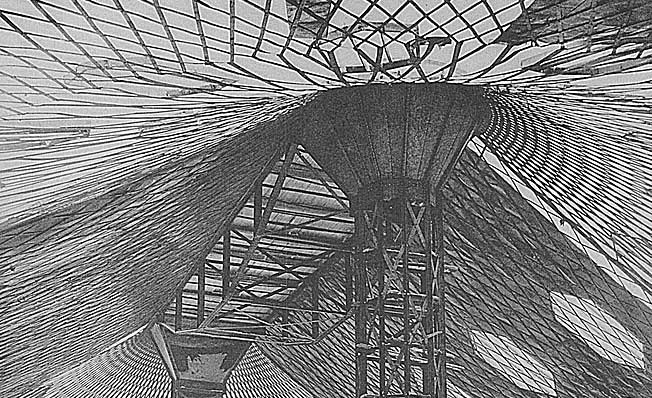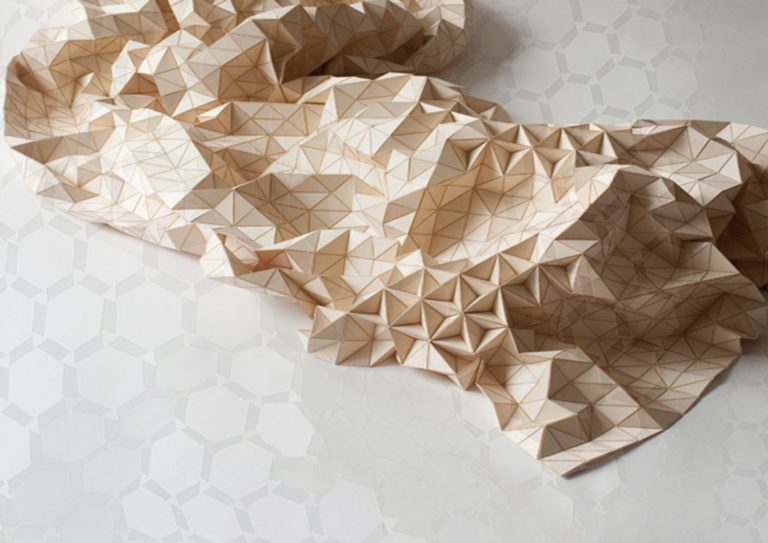Hello world.
Architects have long been called as professionals who can’t do maths. This has been a subject of many online dialogues, fun posts (or as they call it, memes) and so on, but the debate continues. And while you accuse us of being bad at mathematics, we have on a daily basis applied the science of numbers every time we have drafted out a design, did volumetric calculations, estimated material requirements or prepared the bill of quantities! Let us take a step back into the basics of architectural principles and find out whether mathematics plays any role in the work we do at all. Not saying that this piece aims to put a stop to the debate once and for all (its not going to stop), but this will help all of us in making better arguments the next time there’s a debate!
To start, let’s discuss The Golden Ratio. This geometrical representation has been in existence since the last 2400 years or more, and has given birth to The Golden Rectangle, a four-sided shape bearing golden proportions! Coming to buildings, we all have heard of Parthenon, the one famous temple located on the Athenian Acropolis of Greece. The facades and many elements therein of this 2464 years old temple can be circumscribed by the Golden Rectangle, providing clear proof that mathematics was actively used in architecture long before we existed. Coincidence? No, we don’t think so.

The dilapidated Parthenon displaying its Golden Characteristics.
Plato writes in Philebus:
“What I understand here by beauty, is not what the common man generally understands by this term as, for example, the beauty of living things and their representation. On the contrary, it is sometimes rectilinear and circular, with the surfaces of solid bodies composed by means of the compasses, the chord, and the set square. For these forms are not, like the others, beautiful under certain conditions; they are always beautiful in themselves.”
Numerous examples can be sited from old and medieval age architecture belonging to Egypt, Ancient Greece, Persia, and India where construction used to follow specific geometric patterns. These were directly obtained from cardinal directions, religious principles and numerology, providing a solid hint that architecture in those days used to be a complex mix of religion, numerology, cosmology and so much more. Many Hindu temples display fractal geometry, and the extravagant display of geometric tiling pattern on Islamic establishments confirm the fact that mathematics was indeed extensively used for storytelling through buildings. Vitruvius’s De Architectura elaborates in extensive details the importance of symmetry and proportions in Renaissance Architecture. There are multiple cases where mathematicians themselves have practised Architecture apart from being great philosophers of their time! Antoni Gaudi has in his nineteenth-century works in Barcelona perfected the use of hyperboloid structures, and the same can be said about Vladimir Sukhov in Russia. It was pure mathematics at play when Richard Fuller perfected the design and implementation of the Geodesic Dome in real-life buildings.

Vladimir Sukhov’s Oval Pavilion sing tensile steel latices.
Frank Gehry’s deconstructivism again is another great example of how mathematically irregular forms can be played with to create abrupt and incoherent structures. But rest assured, the incoherence is the result of hours and months of carefully calculated structural and functional details. In recent times, the design industry has been stormed over by parametrics- seamless curves and forms that seemed impossible ten years ago are now easily constructed through space frame structures. Parametric design is completely based on an algorithm model, and the present day implementations of the same can be found in Zaha Hadid’s buildings. Greg Lynn’s blob-and-fold architecture can be considered to be one of the first computer-generated-parametric designs. Softwares like Rhino and Grasshopper, Catia, Dynamo and others serve as perfect examples of implementation of data flow algorithm in architecture. And with the entry of Artificial Intelligence in Architecture and Urban Design, exciting events await. Still believe that mathematics is absent in the design of buildings?

The Geodesic Dome by Buckminster Fuller constructed out of space frame members.
Let us come down to daily dealings now. Ever heard of Anthropometry? It is the scientific study of measurements and proportions of the human body. We keep in mind anthropometrics everytime we design a room, place doors or chalk out the furniture layouts. Ekistics is a branch of applied mathematics that concerns the science of human settlements, including regional, city, community planning and dwelling design. Starting from dimensions of rooms to even the height and width of the chairs you use, everything has been designed after careful study of the mathematics of human body. All daily consumables, from your toothbrush to your garments is a combination of design and mathematics.

Modern designs actively use parametric concepts and complex geometric structures.
We were discussing the same last week in the studio, and we came up with an interesting way of looking at it. The modern concept of modular designs is all about mathematics. Breaking down designs into the smallest repetitive unit is a way of looking at it. In a home, each room can be looked as a module, versions of which comes together into making the home. To look at it from the module pov, even bricks are used as a module in making the building, and every element can be subdivided into small modules. This approach brings in all the playfulness into the process of design, allowing architects to create unlimited permutation and combinations. One of the easiest ways of solving a design is to look at it as an accumulation of multiple numbers of systems. Zeroing in as precise mathematical representations of the processes at work, these systems are created and repeated as and when the scheme demands. Once accurately defined, these systems will offer the required flexibility to accommodate different scenarios. We quote from the discussion, “If you break it up into small parts, the basic ones can be multiplied to create any combination in any shape, and you get the field ready. After that, it is simply a problem of probability in getting the best one out.”
Mathematics has been an integral part of Architecture since its inception! All Indian temples embody a complex set of calculated approaches, cardinal principles in the site layout, a geometric pattern in plans, tessellations and structural considerations combined to produce the magnificent superstructures! Even the use of trigonometry has been vastly found in calculating solar angles and movement so as to give the building the right shape, allowing particular solar ingress as needed for religious practices! To prick our own selves with it, the mathematics associated with the Pyramids haven’t fully been solved yet by our mathematicians and scientists!
If one looks around it, mathematics can be found everywhere, starting from the petals of the rose to the lunar cycles that control our oceans. It only feels right that architecture should be no exception to it!
To shed light on the fact that architects have for ages been called out for being weak at maths, that’s because ‘the artsy stigma’ surrounds us! We won’t refute the fact that we are the dreamy lot, scribbling on our papers and soaking up colors since we remember, but be warned- fierce mathematicians do exist amongst us! Definitely, we do not attend to those long equations and differentiate our way to the Fields Medals, but we do integrate the optimum components into designing the best spaces for you! If that ain’t maths, we don’t know what it is!!!
Till the next time.
Basics.
Images used are sourced from the internet. Basics Architects do not hold or claim any rights to the same.



